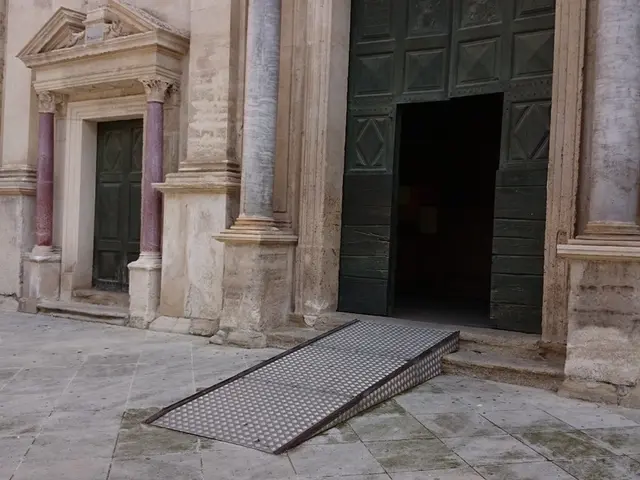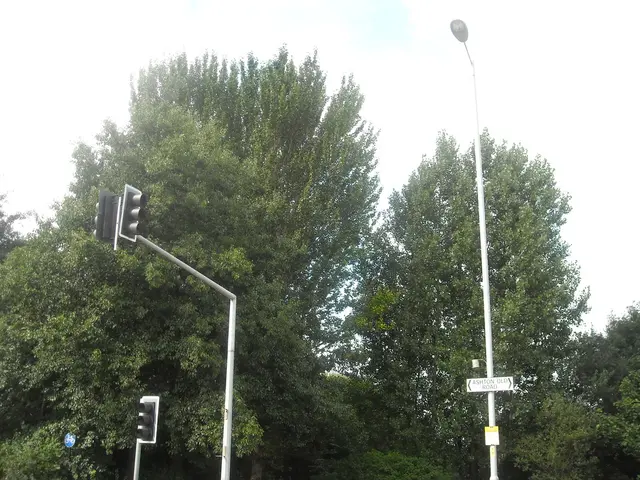Preparing for Durability in 2025: Prioritizing Climate Change Mitigation
In the face of escalating climate-related weather events, constructing resilient homes that can withstand the increasing frequency and severity of these disasters has become a paramount concern. According to the World Meteorological Organization, a climate update issued in 2024 revealed a 40% chance of global temperatures surpassing 1.5°C above pre-industrial levels, a figure that may further surge in 2025. As a result, the need to fortify homes against these unstable and adverse environmental conditions is becoming increasingly urgent.
To respond to this pressing challenge, the Insurance Institute for Business & Home Safety has made significant updates to its FORTIFIED guidelines for resilient building construction. These revised standards aim to minimize damage inflicted by storms, tornadoes, and hurricanes, with an emphasis on reinforcing vulnerable areas within the home.
At the heart of building resilient homes lies the idea of adopting designs and processes that are both sustainable and environmentally friendly. To achieve this goal, construction professionals are turning towards energy-efficient machinery, such as equipment powered by alternative fuels like biodiesel and solar options.
In terms of design, there are several key areas that require focused attention to ensure that homes can effectively protect families during extreme weather events.
- Roof Design and Construction
- The roof, being directly impacted by weather events, will require stricter construction guidelines according to the updated 2025 FORTIFIED home standards. This includes the use of impact-resistant shingles and a tight nailing pattern for roof decks to withstand high winds and hail, as well as testing for roof-mounted vents to prevent wind-driven rain from entering the home.
- Energy Efficiency and Heat Management
- With the rising temperatures and increasing frequency of heatwaves, homes will need to be designed to reflect heat rather than absorb it. This can be achieved through the use of light-colored roofing materials and pavement, passive design features such as large, openable windows that allow for natural ventilation, and airtight walls and windows to prevent air leaks and moisture infiltration.
- Water Management and Flood Protection
- In flood-prone areas, it is crucial to implement water management practices during construction to prevent water from entering the home during a crisis, thus minimizing damage and potential mold growth. This includes sealing the foundation, installing flood-resistant doors and windows, and incorporating rainwater harvesting and greywater recycling systems to reduce reliance on public water systems during emergencies.
- Solid Structural Systems
- As demonstrated by the destructive 2024 Atlantic hurricane season, a home's structural integrity plays a vital role in its ability to withstand extreme weather events. To build a truly resilient home, it is essential to prioritize a strong, continuous load path, reinforced foundations in earthquake-prone regions, and the use of shear walls and metal connectors to strengthen the building's core structure.
- Sustainable and Renewable Energy Resources
- In addition to enhancing resilience, it is crucial to minimize the environmental impact of these fortified homes. This can be achieved by installing renewable energy systems, such as solar panels, as well as underground cables to reduce the risk of power disruptions, and fitting homes with energy-efficient systems to reduce power consumption during critical times.
By addressing these key areas in roof design, energy efficiency, water management, structural systems, and sustainable energy resources, homes can become more resilient against extreme weather events, minimize their impact on the environment, and provide greater safety and comfort for their occupants. These principles are becoming increasingly essential in our changing world, as the costs of natural disasters continue to rise and the challenges posed by climate change become more pronounced.
- The updated 2025 FORTIFIED home standards focus on improving roof design and construction, mandating the use of impact-resistant shingles and a tight nailing pattern, as well as testing for roof-mounted vents to withstand severe weather events.
- To cope with rising temperatures and frequent heatwaves, resilient home designs should incorporate energy-efficient machinery and materials, like light-colored roofing and pavement, and passive design elements such as large openable windows for natural ventilation.
- In flood-prone areas, water management practices should be implemented during construction to prevent water entry, ensuring sealing of the foundation, installation of flood-resistant doors and windows, and adoption of rainwater harvesting and greywater recycling systems.
- The structural integrity of homes is crucial in withstanding extreme weather events,emphasizing the need for a strong, continuous load path, reinforcement in earthquake-prone regions, and use of shear walls and metal connectors to strengthen the core structure.
- To minimize the environmental impact of resilient homes, renewable energy systems, like solar panels, should be installed, along with underground cables and energy-efficient systems to reduce power consumption during critical times, promoting sustainable living and technological advancement.








